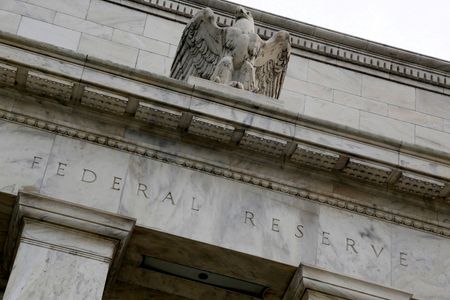LONDON (Reuters) – It’s rate hike central with monetary policy meetings in the United States, Britain, Australia and Norway in the week ahead.
Any signs that the pace of aggressive tightening among big developed economies could slow is key. That also puts the spotlight on the October U.S. jobs report and euro area inflation data. In emerging markets, all eyes are on Brazil after leftist Luiz Inacio Lula da Silva won Sunday’s presidential election.
Here’s a look at the week ahead in markets from Kevin Buckland in Tokyo, Lewis Krauskopf and Rodrigo Campos in New York, and William Schomberg and Dhara Ranasinghe in London. Graphics by Vincent Flasseur and Sumanta Sen.
1/ FOUR IN A ROW
A fourth straight jumbo 75-basis point (bps) interest rate hike is widely expected when the Federal Reserve meets on Nov 1-2.
Investors, instead are focused on whether the pace of future hikes will slow as the Fed weighs the risks to economic growth against its progress in curbing soaring inflation.
Wall Street’s latest rally is underpinned by some hopes the Fed will react to softer economic data by easing up on their aggressive rate hikes. Fed chair Jerome Powell has come under political pressure to be careful of putting U.S. jobs at risk by tightening policy too much.
A consequential week for markets also includes Friday’s October U.S. payrolls report, with economists polled by Reuters forecasting the economy created 200,000 new jobs.
GRAPHIC – Terminal velocity
https://graphics.reuters.com/GLOBAL-MARKETS/zjpqjqyxnvx/chart.png
2/ MORE OF THE SAME
The Bank of England looks set to raise rates by the most since 1989 on Thursday with a 75 bps increase baked into market expectations.
That is down from near-100% bets on a full percentage-point leap in the Bank Rate which were doused last week by new finance minister Jeremy Hunt when he reversed almost all of former Prime Minister Liz Truss’s tax cuts.
But the delay of the first budget plan of Hunt and new Prime Minister Rishi Sunak until Nov. 17 will make it harder for the BoE to spell out its economic forecasts.
After delays caused by Britain’s recent market mayhem, the BoE is also due to start selling bonds from its stimulus stockpile on Tuesday.
GRAPHIC – BoE implied interest rate BoE implied interest rate
https://graphics.reuters.com/GLOBAL-MARKETS/znpnbdxwgpl/chart.png
3/ PEAK, WHERE ART THOU?
In the euro area, the October flash inflation estimate on Monday surged past expectations yet again to hit a record high. Inflation in the bloc hit 10.7%, accelerating from 9.9% last month and dashing hopes that peak inflation could be near.
The European Central Bank just delivered its second 75 bps rate increase to control price pressures.
Even if signs of peak inflation do emerge soon, policymakers and markets will wait to see if underlying price pressures are broadening out.
Core inflation, which strips out volatile food and energy prices, was at 6% in September – well above the ECB’s 2% target. No wonder some ECB officials are keen to take monetary tightening further by winding down the bonds the ECB holds on its balance sheet.
GRAPHIC – Euro zone’s persisting inflation concerns
https://graphics.reuters.com/GLOBAL-MARKET/byprlomoope/chart.png
4/ DOVISH TOO SOON?
The Reserve Bank of Australia is under pressure ahead of Tuesday’s policy gathering.
Its decision to slow hikes to a quarter point clip earlier this month reverberated through global markets as investors began to consider peak rates might be near.
But data on Wednesday showing a shock jump in Aussie inflation to a 32-year peak suggests the RBA has thrown itself behind the curve, and beckons Governor Philip Lowe to perform an embarrassing about-face.
The Aussie dollar’s reaction has been fairly subdued so far, but a sudden shift back to a hawkish policy outlook should provide some welcome support to a currency that has been battered by global equity market angst and China growth worries.
GRAPHIC – Australian inflation hits 32-year high
https://graphics.reuters.com/AUSTRALIA-ECONOMY/INFLATION/byprlokmepe/chart.png
5/ LULA IS BACK
Former President Lula da Silva won Sunday’s presidential election with 50.9% of votes versus 49.1% for sitting President Jair Bolsonaro, marking a stunning comeback and the end of Brazil’s most right-wing government in decades.
Brazilian financial markets may be in for a volatile week with investors examining speculation about his cabinet and the risk of Bolsonaro questioning results.
Brazil’s currency was higher in early Monday trading.
The real remains the best performing free-floating emerging market currency in Latin America versus the U.S. dollar so far this year.
GRAPHIC – Real performance in 2022
https://graphics.reuters.com/GLOBAL-THEMES/BRAZIL/mopakmqlgpa/chart.png
(Compiled by Dhara Ranasinghe; Editing by Tommy Reggiori Wilkes and Muralikumar Anantharaman)

